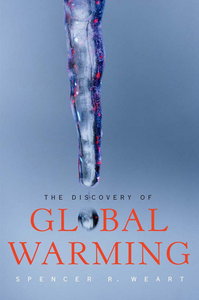 | |
| Author | Spencer R. Weart |
|---|---|
| Language | English |
| Publisher | Harvard University Press |
Publication date | 2003 |
| Publication place | United States |
| Media type | Print (Paperback) & online version |
| Pages | 240 pp |
| ISBN | 0-674-03189-X |
This article includes a list of references, related reading, or external links, but its sources remain unclear because it lacks inline citations .(February 2023) |
The Discovery of Global Warming is a book by physicist and historian Spencer R. Weart published in 2003; revised and updated edition, 2008. It traces the history of scientific discoveries that led to the current scientific opinion on climate change. It has been translated into Spanish, Japanese, Italian, Arabic, Chinese and Korean.